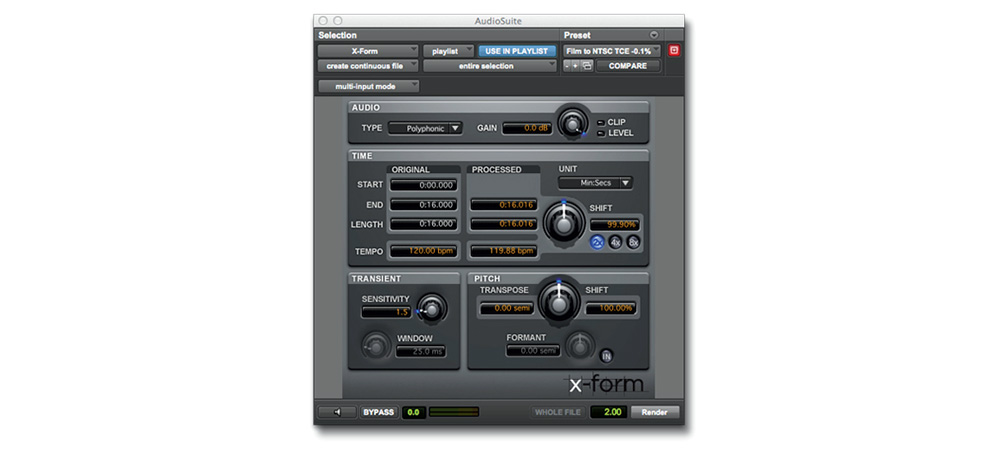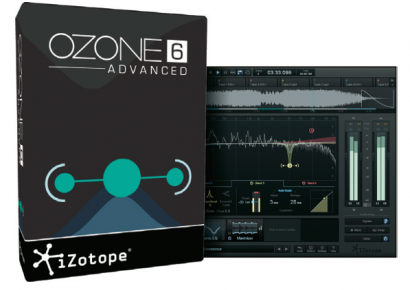Well good news as things have changed over the years and the audio engine and range of production tools that are available with the new Pro Tools 11 is a far cry from what I first learnt to use over a decade ago. With the new AVID Audio Engine in Pro Tools 11, you are able to take your music production further than ever before and not only have optimum performance from your computer in the process, but also results in better sounding mixes that almost defys logic when taken at face value, especially compared to the results one could achieve in previous versions. It’s not just the foundation of the program that has seen an overhaul with the latest version, but also the way in which AVID go about their development and delivery of plug-ins to compliment your sound. AVID’s new three-tier plug-in system makes it easy to get the plug-ins you want based on either specifi cation or price. With Tier 1 plug-ins costing only $99 each, they represent great value in additional tools that you are likely to use in an everyday situation in mix and editing functions. Tier 2 plug-ins step up to $299 and deliver some high quality tools, many coming in combined bundles. But Tier 3 is where the real stuff is stored and at $499, you are getting a premium plug-in that will take your production to another level. This month, I got to put three of these premium Tier 3 plug-ins through their paces. I learnt a thing or two about the performance of my computers in the process, but also got a great insight into just what is capable with Pro Tools 11.
ELEVEN
The first cab off the rank for me was Eleven. I just had to get into this one first as I have used Eleven Rack before as a hardware interface and wanted to hear the plug-in. Put simply, if you are recording guitars and using Pro Tools, you really need Eleven. Putting aside any Spinal Tap references about volume, this plug-in super charges your guitar tones like no other software I have used. For those who don’t want to mess around too much with dialling in a guitar tone, the pre-set patches work very nicely straight away. The AC30 sounds like an old AC30 should sound, just without the stupidly heavy combo needing to be lugged into the room. Also, I couldn’t go past the SLO100 patches without wasting altogether too much time hearing how close it sounded to how my ears remember this amp to sound. But, it goes further than just amplifi er modelling with cabinet and microphone combinations loaded into Eleven for you to work with too. Essentially, imagine the wildest re-amping studio and then add some extra models and you pretty much have Eleven summed up, but all neatly wrapped up into a single software plug-in. It is quick and easy to pull a great sound for recording with, but also allows you to painstakingly dial in the perfect tone to fit within your mix when you get down to the final stages.
X-FORM
Ok, so this is the plug-in within the collection that is so mind blowing it has you sitting back wondering just how it is actually capable of processing audio the way it does. X-Form takes the idea of time and pretty much throws it out the window. You are now no longer bound by time limitations, nor do you need to worry about pitch issues when shifting time within you mix. X-Form somehow allows you to squeeze a piece of audio to 1/8th of its original length, or stretch it out to 8 times its original length. That itself is pretty cool, but to hear this done with the pitch kept intact is just unbelievable. I actually had to play back my tracks a few times to hear what was going on. Naturally, I tried to push the plug-in with some extreme conditions and it still holds up, with vocal and even polyphonic instrumental tracks. For remix work, this is one tool that is going to rewrite the way you look at what can and can’t be done with a piece of audio. It is almost like the audio is now MIDI data and you can stretch and squeeze it as you please with the results coming out just as you demand. I can also see this having a very important role in scoring and post production work when you need to marry several pieces of music to a moving image that may not follow the rules of timing you necessarily want when scoring. It is a little too easy to use, producing great results from a simple interface, but still allowing in depth control when needed for more complex movements in time. Very freaky at first, but very useable in a wide range of applications.
REVIBE
There are countless reverb plugins available, many modelling classic hardware reverb units that we all know well. But, what ReVibe does, more than just modelling a reverb type, is to model the reflections within a room to create a more natural reverb, one that fi ts with the instrument or voice being used. This is what sets ReVibe apart from just any reverb plug-in and warrants its place at Tier 3 of AVID’s plug-in collection. In taking into account the nature of the room being modelled, ReVibe delivers several sounds to the ear as you hear the reverb ring out. It captures not only the delayed sound from the source, but the reflections from several surfaces around the room. After all, not every sound source is going to be placed exactly the same distance from every surface within a room, so ReVibe captures this. You shouldn’t think of this as a digital reverb, because it is not. It is really a room to place your instrument in. You just need to select the right room and get the details trimmed out to suit the needs of your mix. Put simply, it sounds REAL. The only problem is that you can get carried away endlessly adjusting all the parameters to make it that little bit better. But, it can often be hard to improve on perfection, so you need some restraint and the knowledge of when to leave it alone. ReVibe has allowed me to look at reverb in a whole new light and really, the way I used to hear it – naturally. I suggest going to the AVID website and launching a free trial of each and every plug-in within the 3 tiers. I am sure that once you do, you’ll no doubt fi nd your favourites and want to continue using them on just about every project you have in the future.

